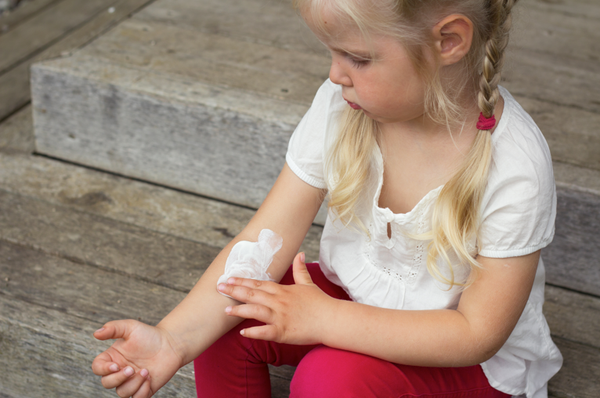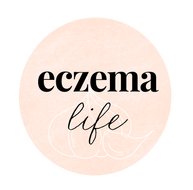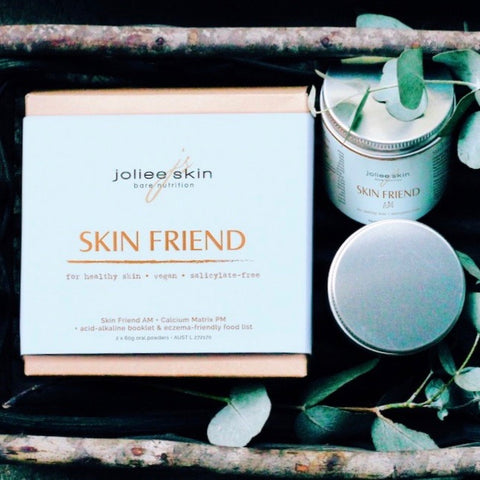What is Topical Steroid Withdrawal Syndrome and how do I prevent it?

What is topical steroid withdrawal syndrome?
Topical steroid withdrawal syndrome (TSWS or TSW) can occur when a person abruptly stops using topical steroids on their skin after years of frequent use.
While short-term use of topical steroid/cortisone appears to be harmless (and sometimes necessary in severe cases), long-term use can have side-effects. The side-effects can occur with increased frequency and severity depending on how long you have used topical steroids.
Topical steroids (cortisone)
- Topical steroids (cortisone, TCS, steroid creams) were introduced as a treatment for eczema back in 1952. Since then the incidence of eczema has more than tripled. So they are not fixing the problem, but are used to manage the symptoms of eczema.
- Side-effects from topical steroid use are well established. Warnings from the manufacturers appear on the packaging including "Do not use on broken skin" and "Do not use for more than 7 days".
Is topical steroid withdrawal a new fad?
Topical steroid withdrawal may seem like a new fad as it only recently gained wide-spread attention. Many doctors question whether the condition even exists. However, topical steroid addiction was identified back in the 1970s, according to a study called "Steroid addiction" published in the International Journal of Dermatology in 1979 (nearly 40 years ago).
Today, topical steroid withdrawal is recognised by some dermatologists, doctors and large associations, including the National Eczema Association. However, further education and awareness are necessary so sufferers can receive the support and advice they need.
Documented side-effects of excess topical steroid use (1979 Ref.)
- atrophic striae of the groin,
- adrenal suppression
- skin thinning (common)
- skin depigmentation or dark pigmentation
- Cushing's Syndrome
- broken blood vessels
- extension of leg ulcers,
- perioral dermatitis,
- steroid acne,
- rosacea-like dermatitis,
- transformation to pustular psoriasis and tinea
- failure to thrive (stunted growth) in children.
Other signs and symptoms of Topical Steroid Withdrawal
Symptoms of TSW include worsening rash, redness, thinning hair, loss of eyebrows, skin folds that can resemble "elephant skin" which can also occur on the arms and above the knees, but it can occur anywhere on the body.
According to the National Eczema Association report:
“Topical Steroid Withdrawal (TSW, sometimes called “topical steroid addiction” or “Red Skin Syndrome”) can occur when topical corticosteroids (TCS) are inappropriately used or overused, then stopped. It can result from prolonged, frequent, and inappropriate use of moderate to high potency topical steroids. It is thought that adult women who blush easily are a population particularly at risk. Very few cases have been reported in children, but no large-scale studies have attempted to quantify the incidence.”
How soon do symptoms of TSW appear?
It depends on what strength of product you are using. For example, high strength steroid creams can trigger side-effects quicker than low strength. Long-term use can be considered 1-2 years of semi-regular use. Many patients I have seen at the Eczema Life Clinic, report having used steroid creams, saying "I have grown up using them". In some cases patients reported use of regular topical steroids/cortisone for eight, ten, fifteen and sometimes 20+ years before stopping use.
Burning, stinging, and bright red skin are the typical features of topical steroid overuse and withdrawal. The signs and symptoms occur within days to weeks after topical steroids are discontinued. In general, Topical Steroid Withdrawal can be divided into two distinct subtypes according to the National Eczema Association:
The majority of erythematoedematous type was found in patients with an underlying eczema-like skin condition like atopic or seborrheic dermatitis. Patients with this type of withdrawal experience swelling, redness, burning, and skin sensitivity usually within 1-2 weeks of stopping the steroids.
The papulopustular type is the presence of papules (pimple-like bumps), nodules (deeper bumps), pustules, redness, and (less frequently): swelling, burning, and stinging.
What is moisturiser withdrawal?
A person suffering from topical steroid withdrawal can also become reactive to all topical products including moisturisers, ointments and cleansers. Some people going through topical steroid withdrawal have also chosen to avoid moisturisers (and call it "moisturiser withdrawal"), as they have become intolerant to all products.
How to prevent topical steroid withdrawal?
While short-term use of topical steroids may be necessary, especially if you have a small child suffering with eczema (and unable to sleep), here are some tips for when you are ready to stop using steroid creams:
1. Don't go cold turkey when coming off topical steroids
This means slowly cutting down on your applications, rather than stopping suddenly. For example, use a lower strength steroid, then only use it every second day for a week, then every third day for two weeks, and so on until you are applying them once a week. After about a 6 weeks of slowly cutting down on topical steroids, stop using them.
2. Feed your skin with nutrients
It's important to give your body what it needs during this time of hormonal imbalance and healing. TSW can take a couple of years, or more, if you do not have extra nutritional support.
Nutritional support reduces the risk of loss of hair, eyebrow loss and "elephant skin" and it helps patients with TSW recover faster.
People with TSW can become sensitive to a range of chemicals including salicylates, preservatives, food additives, amines and MSG. So they should eat a diet low in chemicals such as The Eczema Diet.
Top 10 nutrients for Topical Steroid Withdrawal Syndrome?
Using nutrients supplied from your diet and supplements, the body repairs and creates new skin cells deep within the skin. It takes about 28 days for new, healthier skin cells to travel to the surface and appear as new skin.
The nutrients required by your liver to detoxify steroids, toxins and hormones include magnesium, vitamin B6 (and other B vitamins), molybdenum and zinc, and more. However, if your liver is low in these nutrients, the deactivation process does not occur so the toxins are released back into your bloodstream. This is why TSW can take years to subside.
Photo: Skin Friend is an effective supplement kit for people recovering from TSW
If you have cracks at the corner of your mouth, mouth ulcers, facial eczema and/or scaly skin, you need natural beta-carotene, biotin, vitamin B2, vitamin B6 and vitamin B3. Avoid mega-doses of 20mg or more as B vitamins are acidic.
If you have poor sleep or insomnia, itchy skin, anxiety, depression, eczema and/or prematurely aged skin then you have signs of calcium deficiency.
Rather than buying a dozen supplements, at the Eczema Life Clinic we recommend Skin Friend - a salicylate-free supplement for skin inflammation, which contains natural beta-carotene, magnesium, specific B-vitamins for skin infammation, biotin, calcium, molybdenum, zinc, vitamin E, and more.
If you are looking for a diet to speed up recovery from topical steroid withdrawal syndrome, The Eczema Diet offers scientific advice and healthy recipes. It is designed to speed up the detoxification process, restore gut health, balance the immune system and strengthen the health of your body. It is a healthy, low-salicylate/low-chemical elimination diet that requires supplementation, such as Skin Friend, for a complete TSW program.
Photo: child applying moisturiser to her skin.


